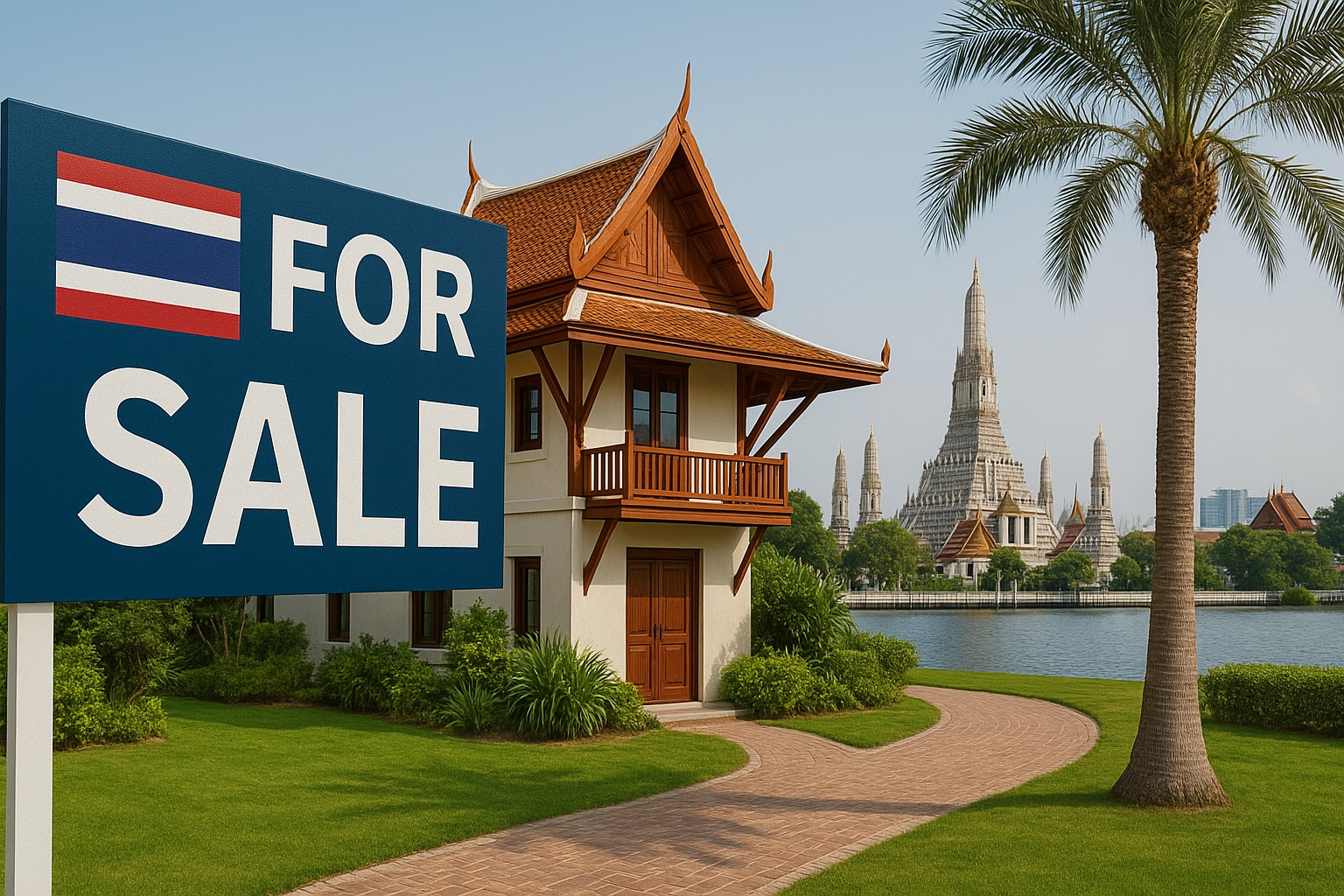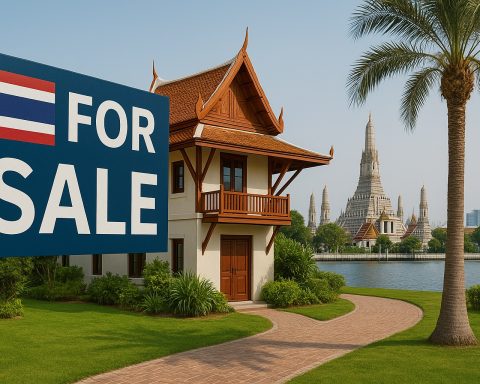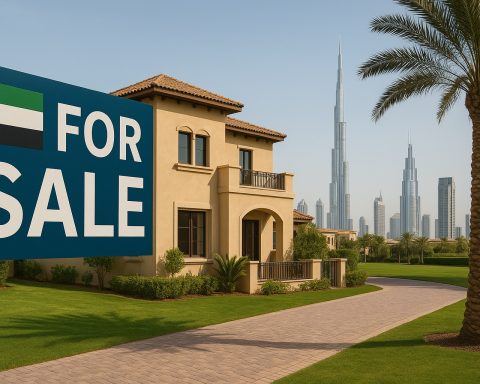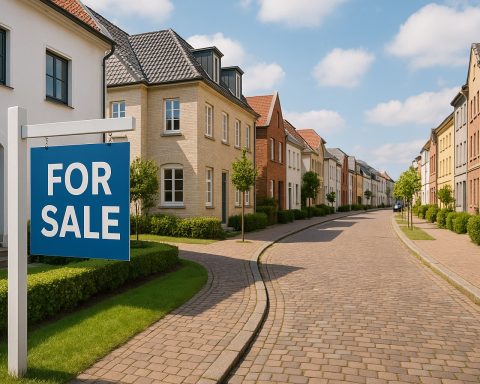Executive Summary: Thailand’s real estate market in 2025 is navigating a mixed landscape. Residential prices are rising modestly (~2–3% p.a.) amid weak domestic demand, with developers delaying launches and the government offering homebuyer incentives. Bangkok and key resort areas like Phuket remain the priciest markets (e.g. 2-bed condo listings ~US$303k in Bangkok vs. $296k in Phuket), but condominiums face significant oversupply and slower sales. Commercial real estate sees divergent performance: Bangkok offices have rising vacancy (~18.2% in H1 2024 bangkokpost.com) as new Grade-A towers flood the market, whereas retail malls benefit from rebounding tourism (prime retail vacancy ~5.2% in Q1 2025 research.jllapsites.com). Industrial/logistics remains a bright spot – the Eastern Economic Corridor (EEC) drives strong demand for factories and warehouses. Foreign investment is robust, with Chinese, Myanmar and Russian buyers accounting for most condominium purchases, and policymakers are studying reforms (e.g. 99-year leases, higher foreign condo quotas khaosodenglish.com). Supportive infrastructure (EEC projects, transit expansions) and policy incentives (visa programs, tax cuts) underpin the outlook. Overall, modest price and sales growth of a few percent is expected in 2025–2028, with opportunities in mid-market housing, logistics/warehousing and tourism-linked developments.
Current Market Overview (2025)
Thailand’s economy grew slowly (~3.1% YoY in late 2024 scmp.com), and household debt is high, restraining local demand. Tourism is rebounding strongly (2025 arrivals nearing 2019 peaks), lifting occupancy and rates in hotels. The government continues housing stimulus: e.g. in 2024 the Ministry of Finance cut property transfer and mortgage registration fees for homes ≤฿7M (to 0.01%), helping to arrest a decline in home sales. By late 2024, overall residential transfers were still down ~4–8% YoY (350,545 units in 2024, -4.4%), but signs point to a recovery in 2025 (REIC projects ~3.7% growth in transactions). Foreign condo buyers remain a key support, even as domestic buyers stay cautious.
Residential Segment
- Urban Housing (Bangkok metro and major cities): Bangkok’s residential market is mature and domestically driven. In Q4 2024 prices rose modestly (single-detached +2.4% YoY, townhouses +3.2% globalpropertyguide.com), while condominium price growth decelerated sharply (only +2.5% YoY in Q4 2024 vs +7.2% in Q3) globalpropertyguide.com. Developers have pulled back on new launches amid tight credit; many firms focus on lower-priced projects (≤฿7M) that match buyer budgets. Inventory overhang is a concern: Bangkok currently has many unsold condo units, and new supply continues (though some projects have been delayed). Rental yields for Bangkok apartments average ~5–6% (gross) globalpropertyguide.com, with smaller units and second-tier locations yielding higher returns.
- Resort and Secondary Markets: Tourist destinations are a separate sub-market. Phuket and Pattaya/Chonburi saw a construction boom, especially as Bangkok developers shifted focus due to cooling city sales scmp.com. Colliers reported ~4,982 unsold condo units in Phuket by Q4 2024 (from 16 projects) scmp.com, after a record 14,718 new unit launches in 2024 (only ~64% sold) scmp.com. This suggests oversupply and price pressure ahead. Nevertheless, prime resort condos remain expensive: average 2-bed condo asking prices were about US$296k in Phuket (nearly equal to Bangkok at $303k), reflecting luxury tourism demand. Chiang Mai and other regions have more modest markets; Chiang Mai condos also attract foreign retirees and expats, but volumes are smaller and price growth is slower. Across all segments, foreign demand – especially for condos – is resilient. In 1H–3Q 2024, 11,036 condo units were sold to foreigners (+3.1% YoY). Chinese buyers led with ~39.7% of these sales (4,386 units), followed by Myanmar (9.5%), Russia (7.2%) and Taiwan (5.5%). Notably, about half of foreign transactions were in the ≤฿3M (US$90k) range, indicating demand mainly for lower-mid segments. Key locations for foreign buyers were Bangkok (38.7% of all foreign transfers, 4,269 units) and Chonburi/Pattaya (36.0%, 3,976 units); smaller shares were in Phuket (748 units) and Chiang Mai (698).
Commercial Real Estate
- Office: Bangkok’s office sector faces oversupply. Premium new buildings have drawn many tenants out of older space, but the large influx of Grade-A towers has pushed overall vacancy sharply higher. CBRE and BP report that office vacancy hit ~18.2% in H1 2024 (up from 16.7% in late 2023) bangkokpost.com. By end-2024 it may reach ~22% bangkokpost.com. With ~260,000 sqm new supply added in H2 2024 bangkokpost.com, rents for older Grade A stock have softened (CBD Grade-A avg. rent fell to ~฿900/sqm/mo) bangkokpost.com. However, 2024 also saw the highest net take-up in five years as firms consolidated into new, high-quality space. Outlook: with more supply coming, landlords face pressure; prime rents may grow slowly or even dip if demand lags. Companies continue to look for ESG-certified, tech-enabled offices.
- Retail: Retail property is rebounding with tourism. Bangkok’s malls have been aggressively refreshed to attract international tourists. In Q1 2025, the prime retail vacancy rate was ~5.2% (a three-year high) research.jllapsites.com, in part due to reshuffling of tenants and the gradual uptake of several large new centers opened in late 2024. Despite the vacancy uptick (+0.51% Q-o-Q research.jllapsites.com), leasing remains steady; about 100 international-brand deals were done in Q1 2025, especially luxury fashion in tourist malls research.jllapsites.com. Rents rose modestly in early 2025 (+1.4% Q-o-Q) research.jllapsites.com, much slower than the post-Covid surge of 2022–23. Future retail performance will hinge on tourism (especially from China and Russia) – any tourism disruption could dampen near-term retail growth research.jllapsites.com.
- Hospitality: Hotel performance is strong. 2024 saw record occupancies and rates in Bangkok as tourist arrivals climbed. The government’s visa-free entry for 93 countries and increased flight capacity helped push arrivals close to 2019 levels. Bangkok’s RevPAR and average daily rates set new highs in 2024. Resort hotels (Phuket, Pattaya, Chiang Mai) also benefited, though new room supply is being added rapidly (particularly in Phuket). Overall, 2025 should see continued growth in hotel demand and values, although high-end segments may cool if flight or security concerns emerge research.jllapsites.com.
Industrial & Logistics
The industrial segment is booming, driven by manufacturing shifts and e-commerce. Demand for factory/warehouse space is concentrated in the Eastern Economic Corridor (EEC: Chonburi, Rayong, Chachoengsao) and surrounding provinces. Government incentives (tax breaks, land sales in industrial estates) continue to lure investments in autos, electronics and petrochemicals, spilling over demand to tier-2 suppliers (ready-built factories). Warehousing is thriving too: the Bank of Ayudhya projects 4–5% annual growth (≈7,000 rai/year) in industrial estate land sales during 2025–2027. Growth drivers include global companies diversifying supply chains into ASEAN, the build-out of EEC infrastructure (roads, ports, high-tech parks), and surging e-commerce which requires modern logistics facilities. Investors are now developing “smart” industrial parks with tech services and green credentials to meet tenant needs. Rents for quality warehouses have been rising, though recent reports vary by location. Overall, industrial property offers higher returns and is the standout sector in the Thai market.
Key Regions and Cities
- Bangkok Metropolitan Region: The nation’s largest market. Bangkok dominates both residential and office space. Condo prices here, while growing slowly, remain the highest nationwide. The city is also the heart of finance, corporate offices and shopping. Upcoming infrastructure (MRT/BTS expansions, Don Mueang and Suvarnabhumi airport upgrades) will enhance connectivity. However, Bangkok’s market is sensitive to domestic economic conditions: high debt and lending constraints have tightened housing demand. In summary, Bangkok offers scale and liquidity but faces oversupply in offices and condos, and moderated price growth.
- Eastern Corridor (Pattaya/Chonburi and EEC): This coastal industrial belt is a growth engine. Chonburi/Pattaya has become a major residential and industrial hub. In Q1–3 2024, it saw 36.0% of all condos sold to foreigners (3,976 units) – second only to Bangkok. However, Pattaya/Chonburi also has heavy condo oversupply and rising rents. The bigger story is manufacturing: the EEC hosts high-tech factories, shipyards (Sattahip), and the new U-Tapao airport-Aerotropolis project. Land prices and factory rents here have been rising as firms move operations, and more infrastructure (roads, high-speed rail, a third airport) is coming. The EEC’s long-term success could make Chonburi and Rayong among Thailand’s most valuable real estate markets.
- Phuket and the South (Resorts): Phuket is Thailand’s top luxury resort market. Tourist recovery has lifted hotel and rental income, but as noted its condo market is overheated scmp.com. Developers keep banking on foreign retirees and vacation home buyers, but with China and Russia slower to return, many units remain unsold. Prices in core Phuket (2BR condo ~฿9–10M) are holding but offer limited upside. Other southern spots (Phang Nga, Krabi) are smaller markets; the economy there leans heavily on tourism. Future growth will depend on international arrivals and any formulae like Phuket’s special economic incentives.
- Chiang Mai and the North: Chiang Mai’s market is niche: it is an educational and cultural center, with moderate condo/resort demand from retirees and expats, plus tourism. Prices are much lower than Bangkok’s and have grown little recently. Infrastructure projects (upgraded airport, Eastern rail link proposals to Bangkok) could boost the region over the long term. For now, Chiang Mai sees stable but modest residential and retail activity, with opportunities in gated housing for retirees and boutique tourism projects.
Pricing Trends and Performance Data
- Residential Prices: In late 2024 Thailand’s house price index shows mild growth. Nationwide, single-detached house prices were +2.55% YoY in Q4 2024 (1.54% real) and townhouses +3.53% (2.51% real). In Greater Bangkok, prices rose similarly (e.g. single houses +2.41% YoY) globalpropertyguide.com. Condominium prices, however, have cooled: Q4 2024 condos were only +2.46% YoY in BKK (1.45% inflation-adjusted) globalpropertyguide.com, down from 7.20% in Q3. Asking prices reflect location: a 2-bed condo averages about ฿11.0M (~US$303k) in central Bangkok vs. ฿10.7M in central Phuket. By contrast, suburban markets (Nonthaburi, Samut Prakan) fetch roughly a third of Bangkok’s price. Industry forecasts for 2025–26 see moderate price rises: home builders’ representatives expect ~2–5% growth, largely tied to land cost inflation.
- Transactions and Sales: Housing sales dipped in 2024: REIC reported a 7–13% decline in registered transfers through Q3 2024 (especially low-rise homes down 12.8%). Condominium transfers actually grew +5.6% in that period, aided by foreigners. Transfer values fell ~8% in early 2024. By unit count, 2024 is estimated ~350,545 transfers nationwide (-4.4% YoY). The 2025 forecast is 363,600 units (+3.7%), implying stabilization. High household debt and lending restrictions remain headwinds, but stimulus (fee cuts) has started to ease sales declines.
- Rental Yields: Thailand’s gross residential rental yields average ~6.2% (Q1 2025) globalpropertyguide.com. Bangkok condos yield roughly 4–6% depending on location and size (smaller units yield more globalpropertyguide.com). Resort areas can offer similar yields if occupancy is high. Yields have edged down slightly (6.27% in Q3 2024 to 6.17% in Q1 2025) globalpropertyguide.com, reflecting rising prices and some rent stagnation. Industrial rents have been rising due to demand – some developers report ~5–10% rent growth annually in prime logistics space.
- Key Data (Table):
| Location/Segment | Metric | Value/Trend |
|---|---|---|
| Bangkok (2-BR condo, urban) | Avg. asking price (USD) | $303,209 |
| Phuket (2-BR condo, resort) | Avg. asking price (USD) | $296,134 |
| Pattaya/Chonburi (2-BR condo) | Avg. asking price (USD) | $178,311 |
| Median house price growth (2024) | YoY change (nationwide) | +2.5% (houses), +3.5% (townhouses) |
| Bangkok office vacancy (H1 2024) | Vacancy rate | 18.2% (up from 16.7% in H2 2023) bangkokpost.com |
| Bangkok prime retail vacancy (Q1 2025) | Vacancy rate | 5.2% (highest in 3 years) research.jllapsites.com |
| Foreign condo sales (Jan–Sept 2024) | Units to foreigners | 11,036 units (+3.1% YoY), ~13.3% of total condo transfers |
| Top foreign buyers (Q1–3 2024) | Nationality share of foreign condo sales | China 39.7%, Myanmar 9.5%, Russia 7.2% |
| EEC industrial land sale growth forecast | New sales/leases growth | +4–5% p.a. (2025–27) |
| Government transfer fees (≤THB7M) | Ownership transfer/mortgage fees | Reduced to 0.01% (from 2%/1%) |
(Data sources: Thai BOT, REIC, CBRE, JLL, Global Property Guide bangkokpost.com research.jllapsites.com.)
Foreign Investment & Legal Landscape
Foreign buyers have always been major players in Thailand’s property market, especially for condos and luxury homes. Current laws prohibit foreigners from owning land (except via exceptions like BOI projects or Thai-registered companies) and limit foreign condo ownership to 49% of a building’s units. Leases (typically 30-year) are common for land. Recently, authorities have been loosening policies to attract FDI: a 2021 cabinet measure offers Long-Term Residency visas (10 years) and “relaxed” land-ownership rules to wealthy foreigners investing in Thai property. In practice, investors qualifying (e.g. investing ≥US$250k in real estate) can acquire rights beyond usual limits.
In mid-2024, the Thai Cabinet authorized studies on more radical reforms – notably extending land lease terms to 99 years and raising the foreign condo quota from 49% to 75% khaosodenglish.com. These changes are still under consideration, but they signal a pro-investment direction. Foreign share of total condo sales has hovered around 10–13%. Chinese buyers dominate foreign demand (nearly 40% of sales units) with recent growth also from Myanmar, Russian, Taiwanese and Western buyers. However, geopolitical and economic volatility abroad (e.g. China’s slowdown) could influence future foreign demand.
Thailand also offers various incentives for foreign investors via the Board of Investment (BOI): projects in tourism, infrastructure or industrial estates can get tax breaks and sometimes land-ownership privileges. For example, BOI-promoted real estate projects (like integrated resorts or condominium complexes with foreign branding) may allow majority foreign ownership under specific conditions. Additionally, programs like the Thailand Elite Visa and initiatives for digital nomads (long-stay visas) complement property incentives to attract wealthy retirees and professionals, potentially boosting the luxury market.
Government Policies & Infrastructure Developments
The Thai government has actively supported real estate through stimulus and infrastructure projects:
- Fiscal/Tax Stimulus: Apart from the fee cuts for homebuyers, officials extended first-home purchase tax deductions and considered relaxing loan-to-value rules (though no broad LTV easing has been enacted as of early 2025). Local measures (like subsidized low-income housing) are also in play. The goal is to spur consumption: the Finance Ministry estimated the 2024 fee cuts could generate ~฿799 billion in property sales annually and add ~1.6% to GDP hlbthai.com.
- Visa & Tax Incentives: As noted, Thailand introduced special visas with long stays and tax breaks (e.g. exemption on foreign income) for high-income foreigners investing in the country. In late 2024 and 2025, authorities hinted at additional incentives for digital nomads and investors (e.g. expanded visa privileges), though details are evolving.
- Infrastructure: Massive projects are reshaping real estate prospects. Key examples include the EEC development (฿1.5 trillion plan through 2027 en.wikipedia.org) which funds roads, high-speed rail, and smart-city zones in Eastern Thailand. A high-speed rail is planned linking Bangkok–U-Tapao–Rayong (through Pattaya) to boost connectivity in the EEC. Bangkok’s urban transit is expanding (new MRT lines, BTS extensions), easing commutes and opening new suburban investment areas. Airports are being enlarged: Don Mueang and Suvarnabhumi are expanding terminals, and a third international airport (in Rayong) is under construction as part of the Aerotropolis near U-Tapao. These enhancements tend to raise land values along their routes.
- Economic Policy: The broader “Thailand 4.0” strategy (digital transformation, renewable energy, biotech, etc.) indirectly impacts real estate by targeting high-tech industry growth and urban innovation. Special Economic Zones near borders and tourism hubs receive tax incentives to spur development. Overall, government policy is pro-growth, aiming to make Thailand a regional hub for logistics, healthcare, and technology – all of which can drive niche real estate demand (e.g. for data centers, hospitals, or biotech campuses).
Projections & Opportunities (Next 3–5 Years)
Analysts and officials expect gradual recovery and moderate growth across Thai real estate. Key forecasts and themes include:
- Residential: Slight uptick in sales and prices. REIC projects 2025 residential transfers up ~3.7% (to ~363,600 units). Price growth is expected in the low single digits; industry veterans predict ~2–5% p.a. in 2025 (though some optimistic forecasts go up to 7% in a favorable scenario). The most resilient segments will likely be affordable housing (targeted by government aid) and asset classes with foreign interest. Investors may find opportunities in unfinished projects with deep discounts, as well as in rental housing near economic zones.
- Commercial: Office space will remain challenging, especially for older stock in CBD. Vacancy may peak in 2025–26 and rents could stabilize or decline slightly for legacy buildings. However, high-quality towers in strong locations should retain value. Retail could see steady performance if tourism continues to recover; developers may emphasize experience-driven malls and mixed-use complexes. As always, local/regional retail (neighborhood malls, convenience stores) will track domestic income, while prime malls hinge on foreign tourists.
- Industrial/Logistics: This is the brightest sector. Demand for warehouses and factories should grow with Thailand’s role in global supply chains. Krungsri Bank’s outlook calls for 4–5% annual expansion in industrial land deals through 2027. Opportunities abound in new logistic parks, bonded warehouses (for e-commerce), and greenfield industrial sites. The EEC and other SEZs (e.g. Northern Corridor around Chiang Mai) offer incentives that can be leveraged. Investors should watch trends in EV manufacturing, medical supplies, and agriculture technology – clusters which drive real estate demand in specific locales.
- Regional Hotspots: Besides Bangkok and the EEC, emerging areas could outperform. For example, Eastern provinces might extend beyond heavy industry: planned developments like Rayong’s Laem Chabang Smart Port and Map Ta Phut Free Trade Zone could spur logistics hubs. In the North, Chiang Mai’s upgraded airport and rail links (under study) could boost property near transit corridors. Special projects like the Kaesong-style development on the Myanmar border or high-speed rail to Laos could later open frontier regions to investment, though these are longer-term.
- Foreign & Niche Markets: If proposed legal reforms pass, expect a surge of foreign activity. A 99-year lease law or 75% condo quota would likely increase foreign purchases of condos and luxury homes. Meanwhile, niches like senior living communities (Thailand’s aging society), student housing near Bangkok’s universities, and co-living spaces (for the young digital workforce) may grow. The data center sector is already expanding (new data centers in Bangkok, EEC) as Thailand positions itself as a digital hub – real estate linked to tech infrastructure is a potential growth area.
Risks: Key uncertainties include continued high interest rates (raising mortgage costs), household debt levels, and the health of major source economies (China, Russia). Political changes or geopolitical conflicts could deter investment. Overbuilding remains a threat in the condo and hotel segments – if demand disappoints, values could stagnate or drop. The pace of government project completion (infrastructure delays) will also affect growth.
In summary, the Thailand real estate market in 2025–2028 is likely to see steady but unspectacular growth overall, with contrasts by sector and region. Investors should be selective: defensive plays include industrial/logistics property and core Bangkok assets, while tourism-related and high-end condos carry higher risk. Ongoing reforms and infrastructure will gradually improve the climate, and any new policies (like tax changes or liberalized ownership rules) could spark renewed interest.
Sources: Thai government and industry reports (REIC, BOT), CBRE Thailand, JLL, Global Property Guide bangkokpost.com research.jllapsites.com krungsri.com, news media and market analyses khaosodenglish.com.












